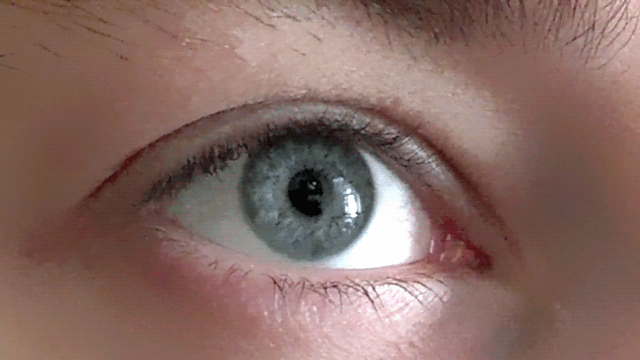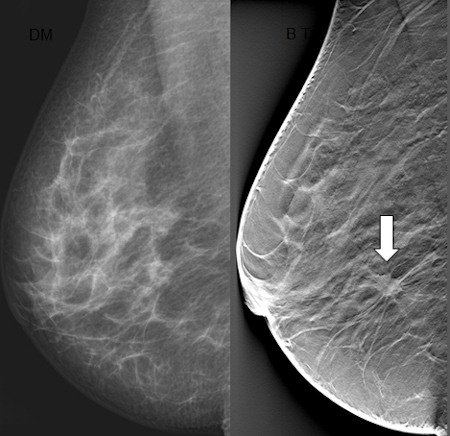TB Vaccine May Work Against Multiple Sclerosis

|
A vaccine normally used to thwart the respiratory illness tuberculosis also might help prevent the development of multiple sclerosis, a disease of the central nervous system, a new study suggests.
In people who had a first episode of symptoms that indicated they might develop multiple sclerosis (MS), an injection of the tuberculosis vaccine lowered the odds of developing MS, Italian researchers report.
“It is possible that a safe, handy and cheap approach will be available immediately following the first [episode of symptoms suggesting MS],” said study lead author Dr. Giovanni Ristori, of the Center for Experimental Neurological Therapies at Sant’Andrea Hospital in Rome.
But, the study authors cautioned that much more research is needed before the tuberculosis vaccine could possibly be used against multiple sclerosis.
Higher case load lowers cost of repairing bones that protect eye

|
Adding to evidence that “high-volume” specialty care in busy teaching hospitals leads to efficiencies unavailable in community hospitals, a new study by Johns Hopkins researchers finds that patients undergoing repair of traumatic eye socket injuries at its busy academic medical center fared just as well at far less cost than those treated at all other Maryland hospitals.
The study’s findings, the researchers say, suggest that major cost savings can be had from economies of scale such as utilization of supplies, spending less time in the operating room and potentially from more streamlined pre- and post-operative processes when patients seek eye trauma care at a hospital that specializes in those procedures.
“The presumption has always been that treatment at teaching hospitals is inherently more expensive given the specialized care they provide and the costs of their graduate medical education responsibilities. However, somewhat counter-intuitively, our research shows it’s actually significantly less expensive and just as effective to treat these types of injuries at academic medical centers,” says Michael P. Grant, M.D., Ph.D., director of the Eye and Orbital Trauma Center at the Wilmer Eye Institute at Johns Hopkins. “The cost of health care is on everyone’s minds. Maybe a good way to save money and stretch our health care dollars would be to direct even more patients to the specialists who frequently treat these injuries.”
Grant led the study published in the December issue of the journal Ophthalmology.
HIV-1 movement across genital tract cells surprisingly enhanced by usurping antibody response

|
Infectious disease researchers have identified a novel mechanism wherein HIV-1 may facilitate its own transmission by usurping the antibody response directed against itself. These results have important implications for HIV vaccine development and for understanding the earliest events in HIV transmission.
In a study appearing in the November issue of PLoS Pathogens, Dr. Donald Forthal of UC Irvine and colleagues studied the mechanisms employed by the virus to cross genital tract tissue and establish infection. Since cervicovaginal fluid is acidic and HIV-1 in cervicovaginal fluid is likely coated with antibodies, they explored the effect of low pH and HIV-1-specific antibodies on transcytosis, the movement of HIV-1 across tight-junctioned epithelial cells.
The researchers found that the combination of HIV-1-specific antibodies and low pH enhanced transcytosis as much as 20-fold.
Tuberculosis: Nature has a double-duty antibiotic up her sleeve

|
Technology has made it possible to synthesize increasingly targeted drugs. But scientists still have much to learn from Mother Nature. Pyridomycin, a substance produced by non-pathogenic soil bacteria, has been found to be a potent antibiotic against a related strain of bacteria that cause tuberculosis. The EPFL scientists who discovered this unexpected property now have a better understanding of how the molecule functions. Its complex three-dimensional structure allows it to act simultaneously on two parts of a key enzyme in the tuberculosis bacillus, and in doing so, dramatically reduce the risk that the bacteria will develop multiple resistances. The researchers, along with their colleagues at ETH Zurich, have published their results in the journal Nature Chemical Biology.
Stewart Cole, director of EPFL’s Global Health Institute, led a team that discovered the anti-tuberculosis effect of pyridomycin in 2012. By inhibiting the action of the “InhA” enzyme, pyridomycin literally caused the thick lipid membrane of the bacterium to burst. Now the scientists understand how the molecule does this job.
Dual anti-mutation ability
The tuberculosis bacillus needs the InhA enzyme along with what scientists refer to as a “co-factor,” which activates the enzyme, in order to manufacture its membrane. The scientists discovered that pyridomycin binds with the co-factor, neutralizing it.
Our pupils adjust as we imagine bright and dark scenes

|
Conjuring up a visual image in the mind - like a sunny day or a night sky - has a corresponding effect on the size of our pupils, as if we were actually seeing the image, according to new research.
These findings, published in Psychological Science, a journal of the Association for Psychological Science, suggest that the size of our pupils is not simply a mechanistic response, but one that also adjusts to a subjective sense of brightness.
“Visual imagery is a private and subjective experience which is not accompanied by strongly felt or visible physiological changes,” explains psychological scientist and lead researcher Bruno Laeng of the University of Oslo. “It is a particularly difficult topic to research, as years of controversy about the nature of mental imagery testifies.”
Along with co-author Unni Sulutvedt, also from the University of Oslo, Laeng conducted a series of experiments to see whether they could tap into subjective mental imagery by monitoring pupillary size with an eye-tracking device.
Breast tomosynthesis increases cancer detection and reduces recall rates

|
Researchers have found that digital breast tomosynthesis (DBT) led to reduced recall rates and an increase in cancer detection in a large breast cancer screening program. The results of this study were presented today at the annual meeting of the Radiological Society of North America (RSNA).
Digital mammography is the gold standard for breast cancer screening, but may yield suspicious findings that turn out not to be cancer. These false-positive findings are associated with a higher recall rate, or the rate at which women are called back for additional imaging or biopsy.
Digital breast tomosynthesis has shown promise at reducing recall rates in all groups of patients, including younger women and women with dense breast tissue. Tomosynthesis is similar to mammography in that it relies on ionizing radiation to generate images of the breast. However, unlike conventional mammography, tomosynthesis allows for three-dimensional (3-D) reconstruction of the breast tissue, which can then be viewed as sequential slices through the breast.
Because DBT technology is relatively new, it is typically used only as a supplemental screening tool, but since October 2011, every patient screened for breast cancer at Hospital of the University of Pennsylvania (HUP) in Philadelphia has been screened using DBT, according to Emily F. Conant, M.D., chief of breast imaging at HUP and the study’s lead author.
EASAC report warns Europe on extreme weather event increase

|
Europe needs to plan for future probabilities of extreme weather. Heat waves, floods and storms do not respect national frontiers, so there is a need for action at both national and EU levels.
The IPCC has advised that the frequency of many types of extreme weather events will continue to grow globally in coming years. Now the national science academies of EU Member States bring into focus for the first time the scale of the challenge in Europe. Highlighting a 60% rise over the last 30 years in the costs of damage from extreme weather events across Europe, EASAC warns of the grave economic and social consequences if European policy makers do not use the latest estimates of future droughts, floods and storms in their planning while adapting to global warming and the resulting climate disruption.
“Given the tragic events this year in the rest of the world and the recent IPCC report, EASAC feels obliged to draw attention to the growing impact of extreme weather in Europe,” says EASAC President Sir Brian Heap. “This EASAC report follows a highly detailed assessment by a group of Europe’s leading experts on climate (headed up by the Norwegian Academy of Science and Letters and the Norwegian Meteorological Institute) of historic and likely future changes in extreme weather over Europe. From the major loss of lives in heat waves to the economic and human costs of floods and storms, the implications are worrying. They present the European Union and its Member States with significant challenges in preparing Europe for a future with greater frequency of extreme weather. In planning to adapt to such a future, it is critical to use the latest scientific knowledge on how different types of extreme events are expected to develop. This depends not only on the type of event but also where in Europe is being considered since the EU’s 28 countries and over 500 million population live in very different climate zones, from the Mediterranean sub-tropical to the Arctic.”





